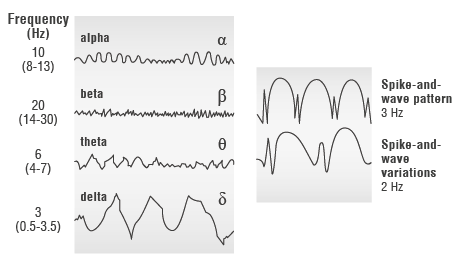When is an EEG used?
One reason doctors use an EEG is if they think someone has a neurological (nerve-related) disorder such as epilepsy or brain damage. Sometimes it is used during surgery to monitor the effects of an anesthetic. An EEG can also provide information about how the brain is functioning in patients who are in intensive care or doing a sleep study. It can confirm brain death as well.
EEGs used to play an important role in diagnosing strokes or detecting brain tumors. But nowadays imaging techniques such as CT or MRI scans are used instead.

